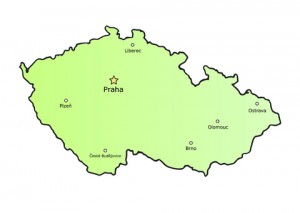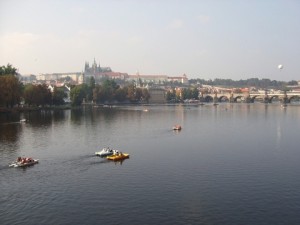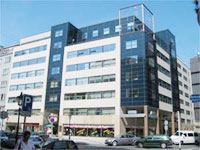
[Updated Oct 2020] A guide to serviced offices and office space for rent in Prague as well as general information that may be useful if you are thinking of renting office space in Prague.
For further offices information or to search office space for rent in Prague just click. Or contact us for any other query.
History & Culture
The capital of the Czech Republic is one of the best known and most respected cities in Europe. As both a tourist magnet and a dynamic city of business and innovation, Prague is arguably Eastern Europe’s most important metropolis. The city was founded in approximately 200 BC but became truly important when Prague Castle was constructed in the 9th century. Prague eventually became the seat of the kings of Bohemia and a thriving merchant community grew up in the city. Traders from all over Europe would regularly visit Prague as the city eventually became a commercial hub. However, it was during the reign of Charles IV of the Luxembourg dynasty that the city came into its own. He erected the Charles Bridge across the Vltava river, today one of the most famous and historic bridges in Europe, and founded Charles University, which also still exists. Charles also ordered the building of the New Town, next to the Old Town, and many of Prague’s most famous gothic buildings were constructed under Charles’ reign. Prague eventually was put under the auspices of the House of Habsburg and was occupied many times during the 30 Years’ War. In 1689 most of the city was destroyed by a fire, though was rebuilt and expanded. And in the 18th century and onwards, the city continued growing, along with its reputation as a centre of commerce. The Industrial Revolution also provided a major boost to the city, as it was located near coal and ironworks. Prague was occupied by the German army in WWII and was then subsequently bombed by the USAAF causing the destruction of a number of landmarks and factories.
The Velvet Revolution
For many years during the Cold War Prague was under the sway of the Soviet Union, until the so-called Velvet Revolution, a non-violent uprising which swept the Communist government out of power and of which the residents of Prague are very proud. In November of 1989, a peaceful student was harshly suppressed by the riot police, which caused a series of demonstrations across the city for the next month. At its peak, there were half a million people demonstrating on the streets of Prague. Eventually, the Communist government announced that it was to step down. In June 1990 the country held its first democratic elections since 1946.
Tourism
Today Prague is one of the most popular tourist destinations in Europe. It is the sixth most visited city in Europe and has benefited greatly from the rise of budget airlines. Because Prague was not the target of an extensive bombing campaign during WWII many of its old buildings and historical sites remain. Today the city features an array of buildings and architectural styles, from Art Noveau to Baroque, Renaissance, Cubist, Gothic and Neoclassical. Prague Castle, along with St Vitus Cathedral, is one of the most popular tourist destinations in the city, as is the Old Town and Prague’s famous Astronomical Clock. The Old New Synagogue, dating from 1270, as well as Josefov, the old Jewish Quarter, are also popular wandering spots for tourists. Among all the old buildings and cultural sites, many visitors might forget a visit to the Prague Zoo, which would be a mistake, as it is consistently ranked as one of the best in the world. Prague also has a range of excellent museums, galleries, and concert halls.

Economy
Accounting for a full 25 percent of the Czech Republic’s GDP, the region of Prague is the highest performing area in the country. Moreover many international companies have chosen Prague as the site of their European headquarters. As of 2010, approximately 18 percent of Prague’s workforce was foreign, accounting for more than 148,000 people. Since the Velvet Revolution, the economy of Prague has switched from industrial-based to more service-oriented. The city has a large financial services sector as well as commercial services and public administration. Both Siemens and Sun Microsystems have research facilities in Prague, which is also home to the world-famous Czech Institute of Physics.
Transport
The Prague Metro, Prague Tram, or the bus system is how most residents of the city get around. There is an integrated ticket system for all modes of transport and Prague’s Tram network is one of the largest in the world. There are multiple taxis, and the ferry’s that ply their trade up and down the Vltava River are also part of the integrated transport network with regular fares and schedules. Prague functions as the hub of the Czech railway system which connects to the rest of the country and Europe. The Esko Prague is a different light commuter train which services the city and its outskirts. The Prague Ruzyne Airport is one of the busiest in central Europe and is flown to by most budget airlines.
Office space to rent in Prague
A recent survey showed that office vacancy in Prague was standing at approximately 12 percent in the first quarter of 2011. The lack of any recent new developments in the city due to the financial crisis has managed to keep rents fairly stable. But demand is now rising again and with it has come to an increase in speculative development. This year there is 105,000 square meters of new office space due for completion, and demand from pharmaceutical companies, and the IT and financial services sectors has been climbing. Currently, the city has about 2.71m square meters of office space, of which 30 percent is modern A-class offices and 70 percent B-class, mainly refurbishments. Rents in central Prague are at an average of EU 21 per square meter per month. This is nearly equal to Vienna at EU 22, though below Warsaw which is currently standing at EU 26 per square metre per month.

Our office space search, advisory and acquisition services are FREE, always. Our Prague office space brokers and agents are globally regulated by the Royal Institution of Chartered Surveyors (RICS) ensuring the highest standards of commercial property advice and service at all times.

The Office Providers are Regulated by the RICS